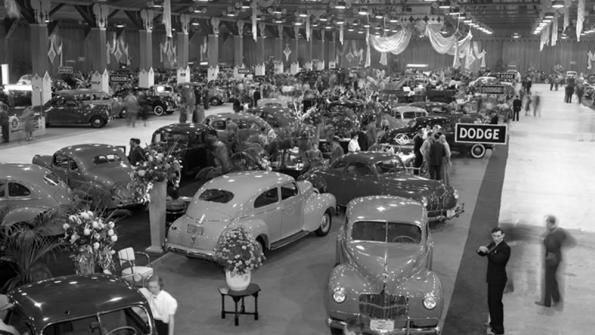Saturday 11 November 1939
 |
| The Massacre of Ostrów Mazowiecka: BEFORE (United States Holocaust Memorial Museum). |
Western Front: On November 11, 3939 the BEF holds Armistice Day memorials on the 21st anniversary of the end of World War I (still known as the Great War). It is an especially poignant ceremony - really, the most vivid celebration of the World War I event for all time, due to later events which will create new, more recent things to memorialize - because the same forces are occupying the same battlefields.
An interesting aspect of this particular Armistice Day is that the British government moves the two-minute period of silence to Sunday in order not to disrupt war production. This sets a precedent that is maintained, making Remembrance Days always fall on the closest Sundays.
Otherwise, activity on the Front is right. The day does not quite hold the same meaning to the Wehrmacht forces.
Battle of the Atlantic: The British detain US freighter Nishmaha at Gibraltar and the Yaka at the Downs. They release the freighter Scanpenn.
Convoy HG 8 departs from Port Said, and OG 6 forms at Gibraltar.
Anglo/French Relations: King George and the French President exchange Armistice Day messages.
Anglo/Finnish Relations: The British sign an agreement to charter much of the Finnish merchant fleet.
British Government: Queen Wilhelmina broadcasts a message to the women of the Commonwealth from Buckingham Palace. Women "have real and vital work to do" as they are "keeping the Home Front, which will have dangers of its own, stable and strong."
German Propaganda: The German Foreign Ministry assures the low countries that their neutrality will be respected.
French Military: There are two main theories as to how tanks should be integrated into the armed forces: in discrete tank units, or as solo operatives supporting the infantry. French Colonel Charles De Gaulle advocates that French tanks are put together in armored divisions, as advocated by General Guderian. That appears to have worked well in Poland for the Wehrmacht, who have separate panzer divisions. The French general staff takes the other view.
German Opposition: Johann Georg Elser, the prime suspect for planting the bomb at the Bürgerbräukeller in Munich, is subjected to daily beatings at the Munich Gestapo headquarters. Witnesses say he is virtually unable to communicate. The Gestapo, led by Hitler's choice Arthur Nebe, head of Kripo (Criminal Police), also is pursuing ordinary police work, such as identifying where various parts of the bomb were purchased.
Hitler appears briefly in Munich at the funerals of the victims of the bombing. Rudolf Hess delivers the eulogy. Hitler leaves without speaking.
British Homefront: Very few white poppies - a symbol of pacificism - are sold for Armistice Days, unlike in previous years.
 |
| The International Car Show in York. |
Holocaust: The Massacre of Ostrów Mazowiecka takes place:
On November 11, 1939, 364 Jews (men, women, and children) were executed by a firing squad in the town of Ostrow Mazowiecki, allegedly for setting fire to the town. The execution was carried out by the Fourth Police Battalion commanded by Police Colonel Brenner.
Future History: World War II had a big impact on Armistice Day not only in Great Britain but in the US. As of 11 November 1939, Armistice Day had only been a federal holiday in the US for a year. An Act of Congress approved May 13, 1938, had made November 11 a legal Federal holiday.
In 1954, Congress amended the 1938 act to make the November 11th Armistice Day holiday "Veteran's Day" so as to honor veterans of both world wars and other conflicts, not just World War I. President Eisenhower signed the legislation. In 1968, Congress passed the Uniform Holidays Bill, which made the federal holiday fall on the closest Monday to the 11th - thus finally conforming with the British decision resulting from 1939 celebration to set a particular day of the weekend as the official celebration, as opposed to the 11th day of November.
 |
| The Massacre of Ostrów Mazowiecka: AFTER (United States Holocaust Memorial Museum). |
November 1939
November 1, 1939: The Jet Flies AgainNovember 2, 1939: The Soviets Devour Poland
November 3, 1939: Amending the Neutrality Act
November 4, 1939: Roosevelt Signs Neutrality Laws
November 5, 1939: The Spirit of Zossen
November 6, 1939: First Dogfight
November 7, 1939: More Lies About SS Athenia
November 8, 1939: Hitler Almost Killed
November 9, 1939: The Venlo Incident
November 10, 1939: Dutch Panic
November 11, 1939: Poignant Armistice Day
November 12, 1939: Peace Efforts Made and Rejected
November 13, 1939: First Bombing of Great Britain
November 14, 1939: The Dyle Plan
November 15, 1939: Elser Confesses to the Bürgerbräukeller Bombing
November 16, 1939: Martial Law in Prague
November 17, 1939: International Students Day
November 18, 1939: Magnetic Mines
November 19, 1939: Walls Around the Warsaw Ghetto
November 20, 1939: First RN Submarine Victory
November 21, 1939: Salmon & Gluckstein on the Prowl
November 22, 1939: British Recover A Magnetic Mine
November 23, 1939: HMS Rawalpindi Sunk
November 24, 1939: Japanese Enter Nanning
November 25, 1939: The Olympics are a War Casualty
November 26, 1939: Soviets Stage an "Incident" at Mainila
November 27, 1939: German Marriage Becomes Perilous
November 28, 1939: Judenrats in Poland
November 29, 1939: The Soviets Prepare to Invade Finland
November 30, 1939: Winter War Begins
2019
No comments:
Post a Comment